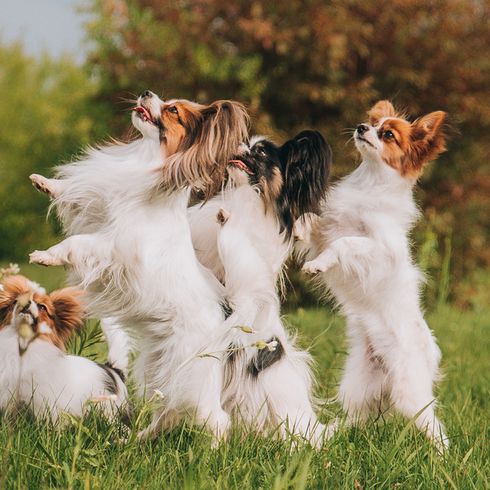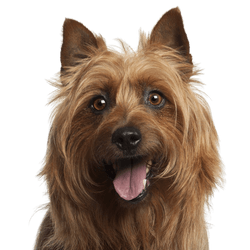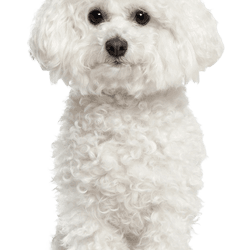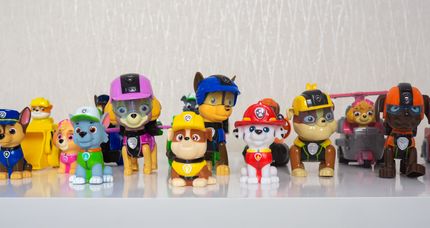Facts & Origin
What is the origin of the Papillon?
Although it may well be that the Papillon originally comes from China, many sources indicate that its origins lie mostly in France, Spain and Belgium. There are already paintings showing the Papillon as a lapdog, which date back to the 12th century. At that time, it was a popular dog for accompanying the noble ladies at the Spanish court. Also in Great Britain the dog had a very respectable status. In 1905, a first standard could be established and on 17.09.1990 the Papillon was officially recognised as a dog breed. Together with the related Phalène it belongs to the group of Continental Dwarf Spaniels.
What are the typical characteristics and breed features of the Papillon?
As the Papillon is a very clever, playful and loyal animal, the breed has been kept as a companion, family and lap dog for more than a thousand years.
The Papillon is a friendly, enthusiastic, happy and eager to learn breed of dog. It specifically likes to be in contact with other dogs. The Papillon's hunting instinct is hardly developed, so that they can be let off the leash without any problem. The Papillon does not like to be alone, on the contrary, it likes to spend time with sociable people and children.
Systematics of the Papillon dog
The Papillon is listed in the FCI's classification system. He is in group 9, i.e. among the companion dogs. In this group, the Papillon is in section 9 as a subspecies of the breed Continental Dwarf Spaniel. The standard number is 77, the Papillon is not a working dog.




| Alternate Name | Continental Pygmy Spaniel |
| Origin | France |
| Life expectancy | 12 - 15 years |
| Care requirements | low-maintenance |
| Activity level | average to high |
| FCI group | Kromfohrländer |
| AKC group | Toy Group |
| KC group | Toy Group |
Papillon mixes
Attitude, character and temperament of the breed
The Papillon is a very adaptable and loyal dog breed, making it well-suited as a companion dog. He can easily participate in the everyday life of a family and is also suitable as a guard dog. The dog is very intelligent and can therefore be trained and guided well. In fact, according to a Focus report, the breed is one of the ten most intelligent dog breeds.
Typical sporting activities that a dog like the Papillon likes to do are Agility or Dogdancing. Although the Dwarf Spaniel's urge to move is not very pronounced, it still needs regular walks in nature to feel content.
Character
Usage


The Papillon is unproblematic in regards to appropriate nutrition. In general, one can say that it has a daily requirement of about 200 kcal, which should be distributed across about three meals. The food itself should be balanced, but always have a high meat content. The Papillon tolerates both wet food and dry food without any problems. For the dog's chewing pleasure, commercial meat snacks or mini chewing rolls can be given to them. Of course, fresh water should also always be kept available for drinking.
What are typical diseases of a Papillon?
Generally, the Papillon is a healthy and resistant dog, unless it is bred to be too small. They often suffer from patella luxation, a knee joint injury. Furthermore, there is an increased risk of tartar formation.
What should be considered in regards to Papillon breeding?
To keep the risk of hereditary patella dislocation as low as possible, when breeding a Papillon puppy you should make sure that both parents are PL-free.
A Dwarf Spaniel costs about 1000 Euros.


The Papillon can be considered an easy-to-care-for dog breed. Its coat must be combed and brushed regularly and whenever necessary, but trimming is not required. Especially the ears and the area behind the ears should be checked and brushed regularly, because mites or other parasites often settle there. It is also a good idea to shorten their claws from time to time so that the Papillon cannot get caught on anything. To prevent tartar, it is also worthwhile to attend to your dog regularly with a toothbrush and toothpaste.
What is the average size of a Papillon?
The Papillon belongs to the smallest dog breeds worldwide. Being a dwarf or miniature dog, they reach an average size of about 20 to 30 centimetres.
How much does a Papillon weigh?
Papillon dogs are divided into two categories. Category 1 includes all dogs of this type with a maximum weight of 2.5 kilograms. The minimum weight is 1.5 kilograms. Category 2 includes all males with a weight of 2.5 kilograms to 4.5 kilograms and all bitches with a weight of 2.5 kilograms to 5 kilograms.
What is the life expectancy of a Papillon?
Ahealthy dog of this type has an average life expectancy of about 15 years. For very small bred Papillon dogs below a weight of 2.5 kg, a shorter life expectancy can be expected.
Appearance and coat of the Papillon
The Papillon is characterised by some external features. Here is an overview:
Body:
- robust physique
- proud, elegant walk
- long body
- high set tail with thick fringe
- straight legs
Coat:
- white base colour
- otherwise all colour variations possible
- strong texture
- medium length, wavy, silky
- no undercoat
Head of the Continental Pygmy Spaniel:
- Skull with central furrow
- short, pointed muzzle
- expressive, almond-shaped eyes
- standing, high set ears (in contrast to the otherwise very similar breed Phalène)
| Fur length | long |
| Fur | flat coated |
| Ear shape | Standing Ears |
| Tail | rolled up |
| Anatomy | slim |
| Size ♀ | 20 - 30 cm |
| Weight ♀ | 2 - 5 kg |
| Size ♂ | 20 - 30 cm |
| Weight ♂ | 2 - 5 kg |
| Suitable For | - |
Colors



Known Diseases
Tartar
If dogs don't get a good food or sugary food, tartar can quickly appear.
Patellar luxation
Patellar luxation is the term used to describe a displacement of the kneecap, which is one of the most common causes of lameness in dogs.
FAQ
-
A Papillon, also called continental dwarf spaniel, costs about 1400 Euro.
-
The run is of course very different. Basically, he needs an average amount of exercise. With 1-2 hours daily outdoors he is satisfied. However, the dog is very intelligent and needs a lot of mental exercise. Intelligence toys, search games, agility training is especially fun for him.
























